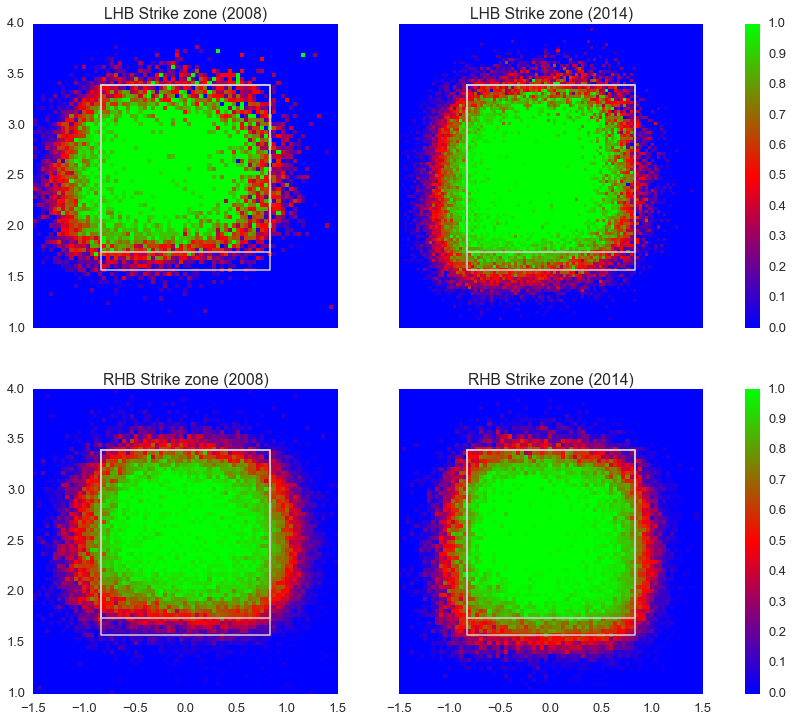In recent articles by Alex Speier and Michael Silverman Mike Napoli and John Farrell complained about how they think the strike zone has grown even larger, among other things, this year.
Napoli from the Speier article:
Farrell from the Silverman article:
iayork thought now would be a good time to look again and see if this was true. Here's what he found.
Napoli from the Speier article:
“My opinion, on lower runs scored and more of a boring game, I think the strike zone is bigger and pitching is better. That’s a double whammy right there. I’m not saying that’s why I’m hitting .200,” said Napoli. “[But] we’re trying to speed up the game, pace of play. How are you going to get pace of play up? More strikes, faster game. The strike zone is bigger. I know everyone can see it. The pitching is better. They’re throwing 90 mph sliders that are moving like crazy. When you talk about hitting in 1-0 rather than 0-1, when you’re getting called strikes, it’s a lot harder to hit. Everyone wants to say, ‘Oh, the hitting is worse.’ No. The pitching has gotten better, but there has to be a little leeway.
Farrell from the Silverman article:
“There are some nights you feel the strike zone goes from the chalk line of the right-handed batter’s box to the chalk line of the left-handed batter’s box,” he said. “For a group of hitters that have been known to see a lot of pitches to try and get into advantage counts, it’s putting us in a position to make major adjustments. Because the more you push back, there’s really no reaction by the umpires, unless it gets to a point where you get ejected. Whether it’s been an edict or a mandate that’s been handed down from Major League Baseball, we see it consistently, a much wider, much lower strike zone across the board.”
iayork thought now would be a good time to look again and see if this was true. Here's what he found.



